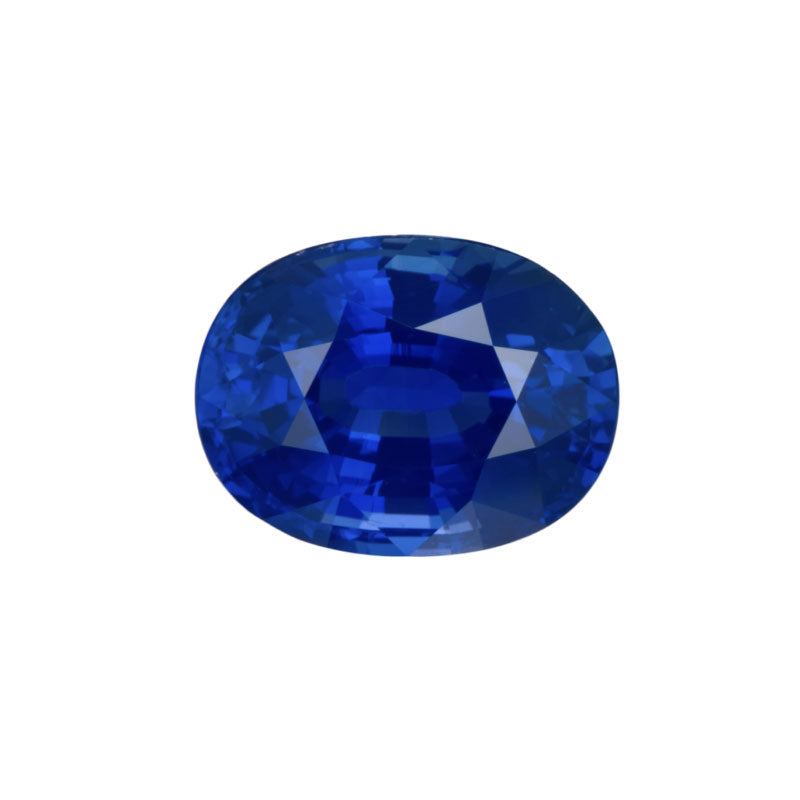FAITH JEWELS GUIDE TO
COLOURED GEMSTONES

Precious emeralds, sapphires, and rubies or semi-precious gemstones such as aquamarine each have their own quality hallmarks that vary from diamonds. They will still be weighed in carat weight and use a similar naming system for the cut of the stone. There is no standardised grading system for coloured stones so it will be even more important to see the stone in person.
Discover our three most popular coloured gemstones below: SAPPHIRE, RUBY & EMERALD.

SAPPHIRE
Sapphires come in many colours including blue, red, yellow an pink. Boasting a striking deep blue shade, the regal sapphire is celebrated not only for its captivating colour but also for its remarkable durability, second only to the diamond. This gemstone, a variety of corundum mineral, is primarily sourced from regions like Kashmir, Myanmar, Sri Lanka, Madagascar, and Tanzania. Its vivid blue coloration comes from trace amounts of iron and titanium, though the presence of other elements can produce sapphires in a range of colors, known as "fancy" sapphires.
When choosing a sapphire, color is paramount, but clarity and cut are also crucial for its overall beauty. Due to the specific and rare natural conditions required for their formation, genuine un-treated sapphires are rare and highly prized.

RUBY
Rubies are the most expensive of the coloured stones, as high-quality stones over a carat are very rare. They are composed of the mineral corundum with traces of the element chromium, which gives it the signature red colour.
The colour is the most important factor affecting the value of a ruby, to the point that a too-light ruby is considered a pink sapphire.
Clarity is the next most important factor. Inclusions will bring down the value of a ruby but note that inclusion-free stones are almost non-existent.

EMERALD
The emerald, renowned for its vibrant green hue, stands as the most esteemed member of the beryl gemstone family. Predominantly mined in Colombia and Zambia, these natural gems have captivated people worldwide with their rich color and mystique throughout history.
Emeralds rank among the hardest of the coloured gemstones; however, naturally occurring fissures and inclusions, along with a brittle texture in its unpolished state, make the stone prone to chipping and breakage.
CHOOSING YOUR COLOURED GEMSTONE
OUR EXPERTISE
- Since magnification is less used with coloured stones, look for “eye-cleanliness”, or a stone that is free of inclusions to the naked eye.
- Purest colours on the spectrum of coloured stones are most sought after. Red, green and blue tones in consistent rich, saturation are highly value. However it is important to be driven by your personal preferences and design suitability.
- Like other stones, coloured stones see a jump in value over 1 carat. Size and carat weight may pale in significance compared to intensity of colour and uniqueness in shape and form.
- Almost all coloured stones on the market are heat treated to reduce inclusions and improve the colour. Non heat-treated stones are very rare and will command a much higher price. At FAITH JEWELS we will always disclose if a stone was treated, or natural.

FROM DREAMS TO REALITY
THE ROLE OF DESIGN
It’s important to remember that your chosen ring design may require a certain stone proportion or size, to achieve its maximum aesthetics.
FAITH JEWEL’S Creative Director will personally be involved in curating and advising you on the perfect gemstone to bring your design to life.
To learn more, or begin your bespoke journey with FAITH JEWELS, contact us below to book an appointment.


